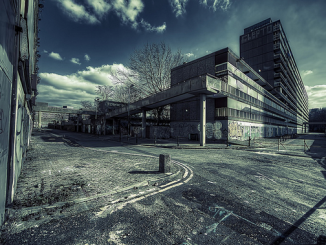
urbanism

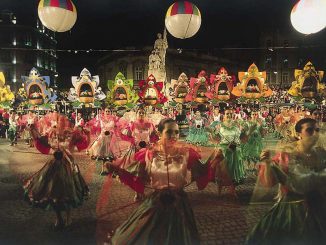
Two cities in the same Lisbon

Homegrown cities: THIS is sustainable development!
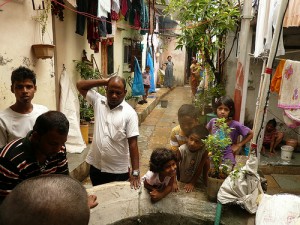 The activists of URBZ collective (of which we wrote in a previous post) are promoting a crowdfunding campaign to develop a plot of land in the neighbourhood of Bhandup in the northwestern suburbs of Mumbai. Their intention is to build there an affordable house, compatible with local construction styles: “homegrown“, and produced in collaboration with local constructors. The house will be sold at reasonable conditions to residents, thus providing the funds for a new project. The idea is to contribute to develop better life conditions for the residents of the so-called “slums”, without depending on international aid or having to rely on NGOs. This homegrown development works against the logic of the big eviction and relocation projects promoted by the state: as happened too often, these top-down projects end up eradicating the population and forcing them into vertical housing blocks, which represent the degree zero of architectural, urban and social thinking, and have been responsible for countless man-made urban disasters in poor and rich countries alike.
The activists of URBZ collective (of which we wrote in a previous post) are promoting a crowdfunding campaign to develop a plot of land in the neighbourhood of Bhandup in the northwestern suburbs of Mumbai. Their intention is to build there an affordable house, compatible with local construction styles: “homegrown“, and produced in collaboration with local constructors. The house will be sold at reasonable conditions to residents, thus providing the funds for a new project. The idea is to contribute to develop better life conditions for the residents of the so-called “slums”, without depending on international aid or having to rely on NGOs. This homegrown development works against the logic of the big eviction and relocation projects promoted by the state: as happened too often, these top-down projects end up eradicating the population and forcing them into vertical housing blocks, which represent the degree zero of architectural, urban and social thinking, and have been responsible for countless man-made urban disasters in poor and rich countries alike.
- Homegrown cities project en Urbz.net
- Join Homegrown cities crowdfunding on indiegogo
- Airoots/Eirut, Matias Echanove and Raoul Srivastava‘s blog
- Interview with Amar Mirjankar, a local contractor the activists are working with [video].
- Documentación sobre la forma local de construir viviendas baratas: video, y artículo “The 2,5 lakh rupee house” en Urbz.net

Peripheries of a colony: modernity as a challenge in Tetouan
“Immigrants from different places, spanish and moroccan, gathered in the neighborhood. […] About this part of Tetouan, we should write not a history but… a novel“. Mohamed Anakar, former resident of barrio Málaga.
Haussman and Cerdà’s modern urbanism was at its peak in Europe, when the Sultanate of Morocco fell under the military and economic pressures of France and Spain. So hispano-moroccan colonial cities grew as cities in an unlimited expansion; but at the margins of the m
edina and the “Ensanche” grid, popular neighborhoods developed, in which lower-class moroccan and spanish neighbors challenged the cultural and linguistic barriers, like a working-class dance in front of modernity. With El barrio Málaga video [link], and the exposition Tetuán desafíos de la modernidad [link] (recently opened in Casablanca) the interdisciplinary equipe of architect Alejandro MUCHADA proposes a post-colonial look on the hispano-moroccan city observed from its peripheries: where the lower classes cohabited and created their own city, outside all plannings, and in an overflowing melting pot.
- “Tetúanmodernchallenge” is a research of Gamuc.org group on the urban and social transformations during the 45 years of spanish occupation in the north of Morocco, through the lens of social housing: PDF of the expo presentet this april in Casablanca : presentation of the expo : Webpage Tetuán Modern Challenge
- The word challenge refers to the moroccan historian Abdallah LAROUI, who used it to describe what modernity represented for pre-colonial moroccan society. See also Josep Lluís MATEO (2007) “El interventor y el caíd. La política colonial española frente a la justícia marroquí durante el protectorado” [PDF]
- The historical critique allows us to identify what solutions were offered to this challenge in the field of housing. Architect Alfonso de Sierra Ochoa put forward a series of middle-scale projects, in which where involved Moroccans from Tetouan: through architecture, we can compare what modernity was imagined in that times, with the one Morocco has today.

Urban Typhoon: User-generated cities in Mumbai
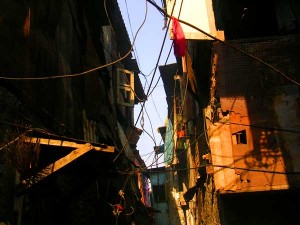 Who is not frightened by the idea of the unstoppable growth of cities in Asia and in the former "third world", or by the perspective (apocalyptical, though critically framed) of moving towards a planet of slums? But in the places closer to this phenomenon - for example in the popular neighborhoods of Mumbai, India - the idea of slum has been criticized since many decades. These urban zones that don't even deserve being called neighborhoods, always presented towards the exterior as marked by lacks (of hygiene, of safety, of integration, of control, even of morality), under a deeper scrutiny reveal histories and dynamics complex and functional, that had been interpreted in various forms according to the different theories. Based in an office in Dharavi-Koliwada (the enormous neighborhood popularized by Slumdog millionaire), the two urban activists Matias ECHANOVE and Rahul SRIVASTAVA (from Urbz collective) show how a series of spontaneous social structures, internal to the so-called slums, cause a constant improvement and development, often obstructed by local authorities or by urban reform plans. In territories as thick and reticular as forests of mangroves, the only valid ways to development are those generated by their very users: homegrown, as the neighborhoods themselves.
Who is not frightened by the idea of the unstoppable growth of cities in Asia and in the former "third world", or by the perspective (apocalyptical, though critically framed) of moving towards a planet of slums? But in the places closer to this phenomenon - for example in the popular neighborhoods of Mumbai, India - the idea of slum has been criticized since many decades. These urban zones that don't even deserve being called neighborhoods, always presented towards the exterior as marked by lacks (of hygiene, of safety, of integration, of control, even of morality), under a deeper scrutiny reveal histories and dynamics complex and functional, that had been interpreted in various forms according to the different theories. Based in an office in Dharavi-Koliwada (the enormous neighborhood popularized by Slumdog millionaire), the two urban activists Matias ECHANOVE and Rahul SRIVASTAVA (from Urbz collective) show how a series of spontaneous social structures, internal to the so-called slums, cause a constant improvement and development, often obstructed by local authorities or by urban reform plans. In territories as thick and reticular as forests of mangroves, the only valid ways to development are those generated by their very users: homegrown, as the neighborhoods themselves. 
Suburbs according to Reclús
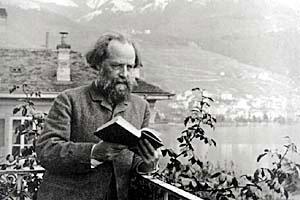 The suburbs, according to the anarchist geographer Elisée Reclús (1830-1905), are not places of exclusion in which are confined those who can't afford to live in the city center. On the contrary, the margins, the periphery, were for him the ideal spaces to develop ways of life closer to nature, without losing the relationship with the hustle and bustle of the city (Reclús had been involved in Paris Commune), but out of the insane density of the metropolis. Reclús lived the last half of his adult life in the suburbs, claiming the last urban fringes as places that permit to break the gap between nature and the city; a central problem for the geographers and urbanists of his time, especially the ecologists and anarchists (Patrick Geddes, Lewis Mumford and, in Catalonia, Cebrià de Montoliu).
The suburbs, according to the anarchist geographer Elisée Reclús (1830-1905), are not places of exclusion in which are confined those who can't afford to live in the city center. On the contrary, the margins, the periphery, were for him the ideal spaces to develop ways of life closer to nature, without losing the relationship with the hustle and bustle of the city (Reclús had been involved in Paris Commune), but out of the insane density of the metropolis. Reclús lived the last half of his adult life in the suburbs, claiming the last urban fringes as places that permit to break the gap between nature and the city; a central problem for the geographers and urbanists of his time, especially the ecologists and anarchists (Patrick Geddes, Lewis Mumford and, in Catalonia, Cebrià de Montoliu).